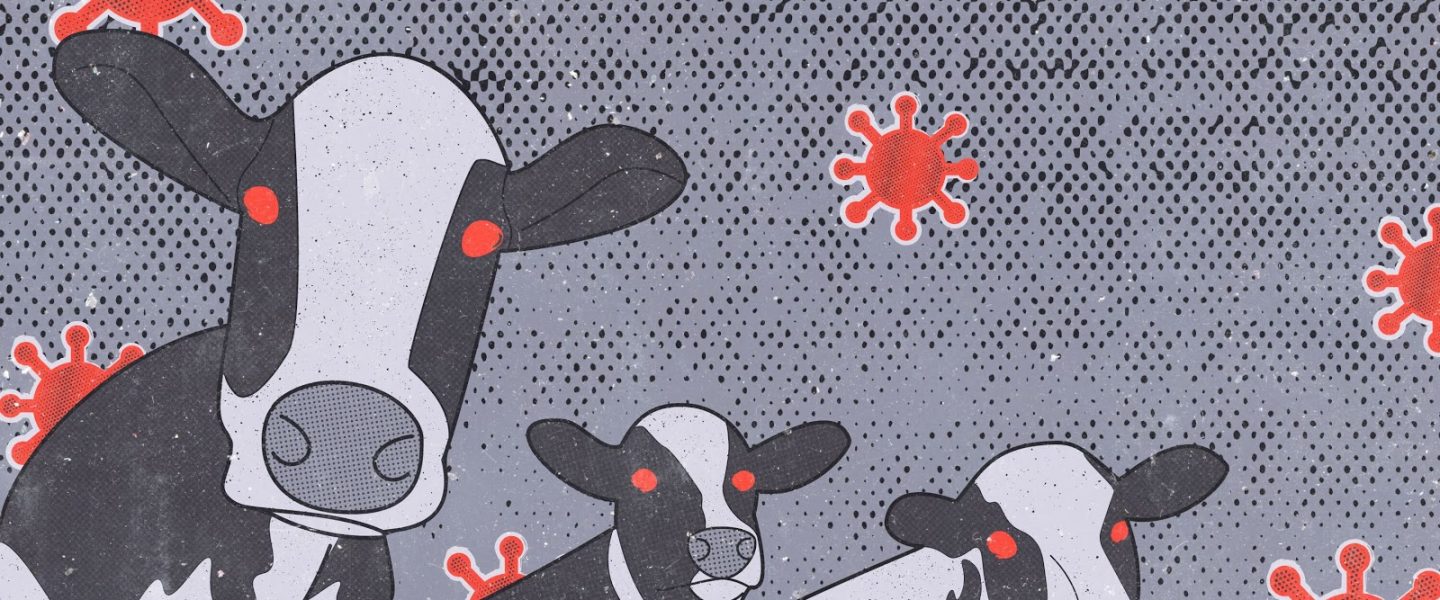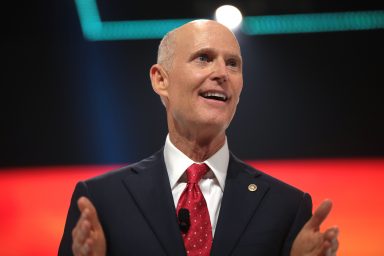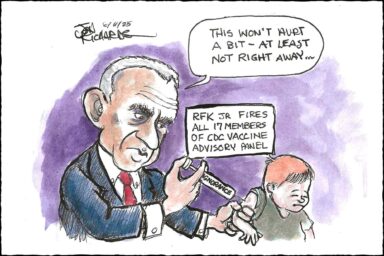Big ag has the US political establishment so deep in its pockets that there’s little will to address the pandemic risks posed by the meat and dairy industries.
After half a million deaths and economic losses in the trillions in the United States alone, the next global health disaster could be right around the corner — but the political will to prevent it is practically nonexistent.
Experts say that the United States’ intensive agricultural practices, best exemplified by CAFOs (concentrated animal feeding operations) or factory farms, could cause future outbreaks. Poor conditions, overcrowding, and the genetic similarity of the animals paired with the presence of human caretakers in these facilities could expedite the jump of an animal-origin disease to humans, similar to how COVID-19 is thought to have transferred from bats to humans, possibly through an intermediate animal.
Despite the existential threat intensive animal agriculture poses to human health, the agriculture industry maintains a stranglehold on both the political establishment and the American diet, which makes regulation extremely difficult — and leaves most politicians unwilling to take a bite.
No Beefing With Big Ag
The first hurdle to agricultural reform is a practical one: The meat and dairy industries are so thoroughly integrated into American agriculture that any changes could disrupt the entire food system. Animal agriculture is closely tied to crop production; 47 percent of soy and 60 percent of corn products are used for livestock consumption. Both products are heavily subsidized to reduce meat producers’ cost of feeding animals, creating a mutually reinforcing loop.
The subsidies also apply to animal agriculture directly. The US government spends up to $38 billion each year to subsidize meat and dairy producers, compared to less than 1 percent of that amount allocated toward other parts of the food system, like the vegetable farming industry — which is not subsidized and excludes crops often used in livestock feed, such as corn and soybeans. The payments are further skewed toward the largest producers, meaning the small, family-owned farm can’t compete with the prices of large agribusinesses’ products. Dairy products are also artificially cheap: Due to dwindling demand, the dairy industry loses on average $10.16 per hundred pounds of milk. In 2018, 42 percent of revenue for US dairy producers came from some kind of government support.
Because animal protein production at all stages is so heavily subsidized, it’s cheaper at the checkout counter than alternative products. The concern is that regulating any part of the $250 billion industry to uphold more stringent biosecurity measures, working conditions, antibiotic use, or spacing in the facilities to prevent disease could harm the average American consumer who relies on low-cost meat.
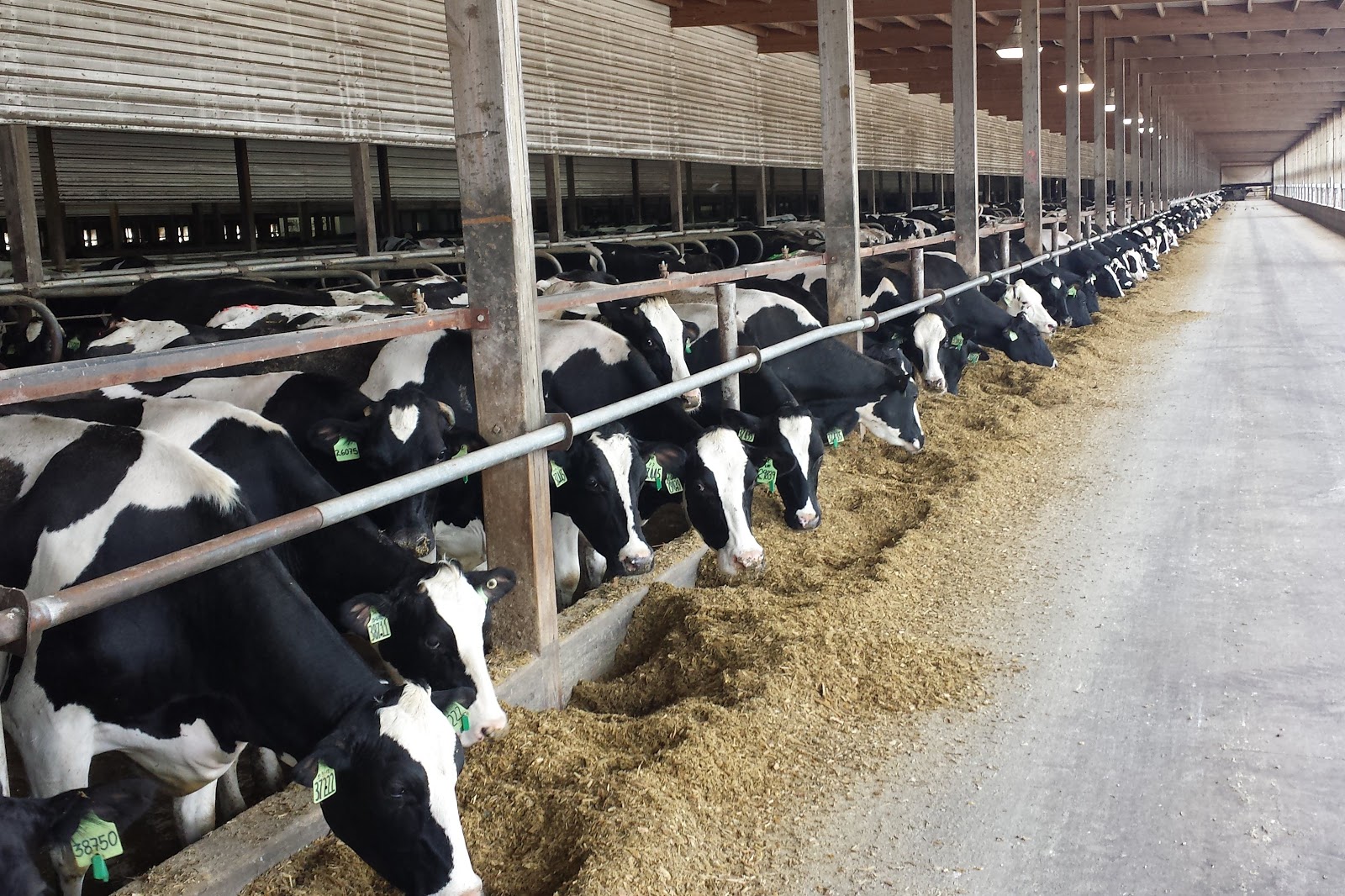
Subsidies and bailouts do more than just keep these industries afloat; they feed into a secondary loop through which agricultural lobbies levy both their importance to the food system and their considerable wealth to maintain the status quo. Three conglomerates — Tyson, JBS, and Cargill — control two-thirds of beef and half of America’s chicken production. In pork, Smithfield, owned by the Chinese company WH Group as of 2013, also has a hand. As Christopher Wolf, professor of Agricultural Economics at Cornell University, noted, “There would be a set of people who would say we haven’t in the past two, three decades paid much attention to antitrust issues. That would be true in some parts of agriculture.”
These large conglomerates determine prices (some packers even conspired to set higher meat prices, resulting in multiple lawsuits), production conditions, and regulations, and mobilize their profits to get beneficial policies in the political arena. JBS alone has spent $7.7 million on lobbying since 2007. Congressional leadership receive campaign donations from agricultural political action committees (PACs), though the majority of the donations go to Republican representatives. Two-thirds of meat industry lobbyists are former government employees.
The result is that the industry is moving in the wrong direction with no end in sight. In 2020, major COVID-19 outbreaks in the meatpacking sector exposed close and unsafe working conditions. (A bill that passed in the House, but is a long shot in the Senate, would provide a pathway to green card holding and citizenship for the large swath of farm hands who are undocumented, but does not address the dangerous conditions under which they toil.)
The main way the government and industry address disease is through early response rather than prevention. Biosecurity is largely at the mercy of surveillance by underfunded institutions like the Animal and Plant Health Inspection Service (APHIS), an agency of the United States Department of Agriculture (USDA) that tracks zoonotics (diseases that can be transmitted among animal species, sometimes from animals to humans), food recalls, and other threats. The USDA buys sick animals from farmers to incentivize early reporting and prevent spread, helps farmers pay for their investments in biosecurity, and has eradication programs for existing diseases. These programs are also chronically underfunded: Wolf noted that the bovine tuberculosis eradication program is funded at around half of its stated needs. At the same time, the USDA has nearly eradicated the disease despite the shoestring budget. “They’re their own worst enemy in a sense because they’re getting the job done on that amount of money,” Wolf told WhoWhatWhy. “No good deed goes unpunished, right?”
In September 2019, the USDA removed limits on the line speed in pig slaughterhouses, meaning producers could slaughter a limitless quantity of animals, putting worker and food safety at risk. The Trump administration signed an executive order to keep slaughterhouses open amid COVID-19 outbreaks (a ProPublica report shows the order was drafted by a meat lobbyist) and also intended to increase slaughter speeds in poultry facilities, which the Biden administration has since withdrawn.
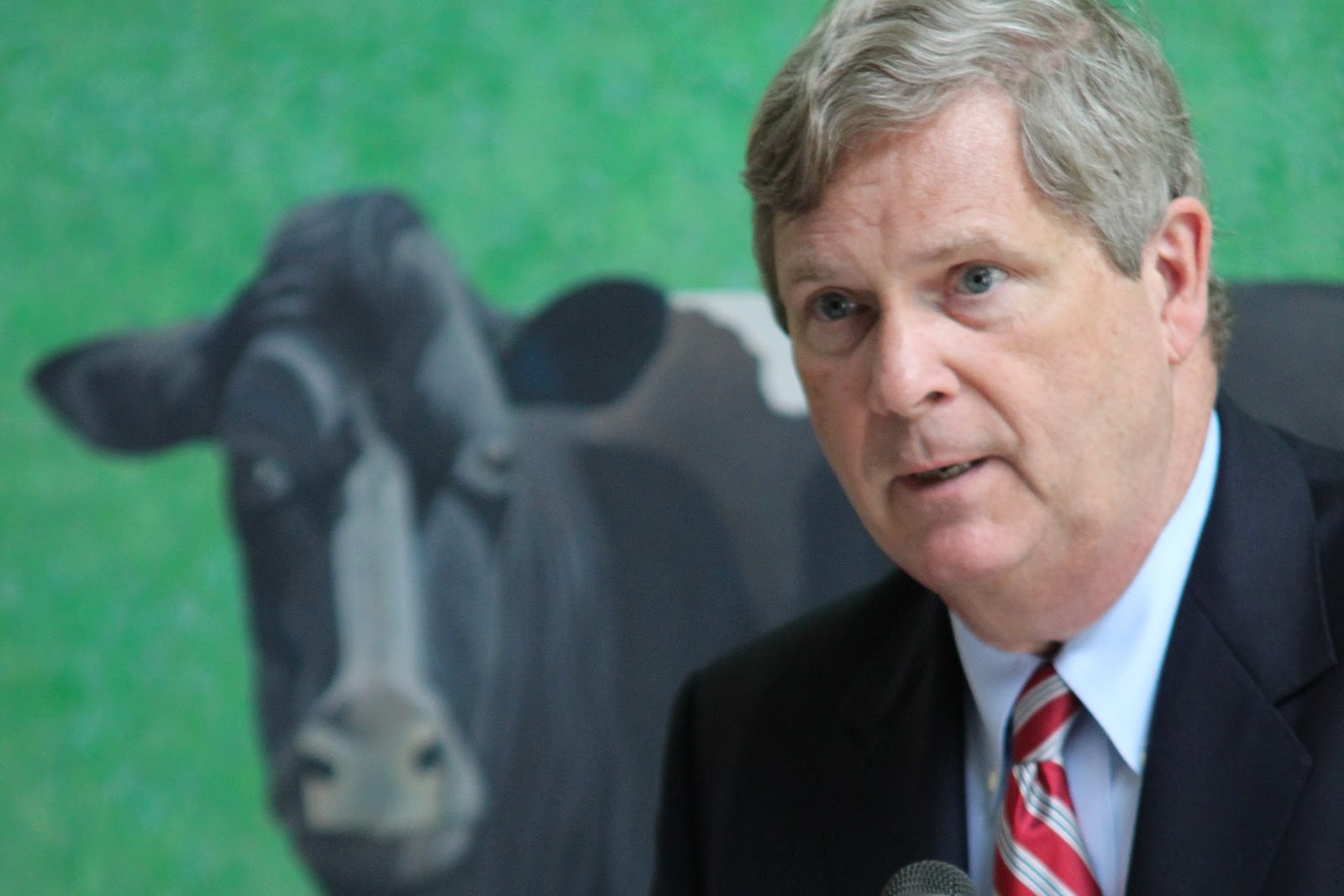
Feeding America — But Doing It Better
Reversing Trump-era deregulation is not sufficient, but there appears to be little appetite for large restructuring of America’s food system even under the Biden administration. US Agriculture Secretary Tom Vilsack, who also served as agriculture secretary under the Obama administration, seems an unlikely candidate to lead the overhaul: He was previously the chief executive of the US Dairy Export Council, an organization backed by the dairy industry that represents their interests in exporting. Some allege that he has a history of suppressing science that runs counter to the interests of the biggest faces in the industry, though he had previously attempted to reduce the industry’s monopolization.
But there’s a dire need for a drastic restructuring because relying on early reporting and biosecurity measures leaves little room for error if a fast-spreading disease arises.
Michael Martin, professor of epidemiology and biostatistics at the University of California, San Francisco and president of the organization Physicians Against Red Meat (PhARM), believes there should be legislation to reduce crowding of animals — but that such measures would only be a start. “There should be some legislation in place regarding crowding and to what extent it can occur in these facilities. Use of antibiotics requirements. Whatever we can do would be helpful in reducing the likelihood of spread and developing a very virulent virus or bacteria,” he said.
Wolf floated creating cost-sharing programs that offset the costs of veterinary services and biosecurity updates for smaller operations, akin to current programs that help offset costs associated with environmental regulations.
Some Senate Democrats are attempting a structural approach. Sen. Cory Booker (D-NJ), who is on the Senate Agriculture Committee, introduced a bill that would phase out factory farms — units with hundreds to thousands of animals — in the next 20 years. Sen. Amy Klobuchar (D-MN) sponsored a bill that would outlaw the largest mergers, unless corporations can prove they do not harm competition. Rep. Ro Khanna (D-CA) introduced a House companion to the bill.
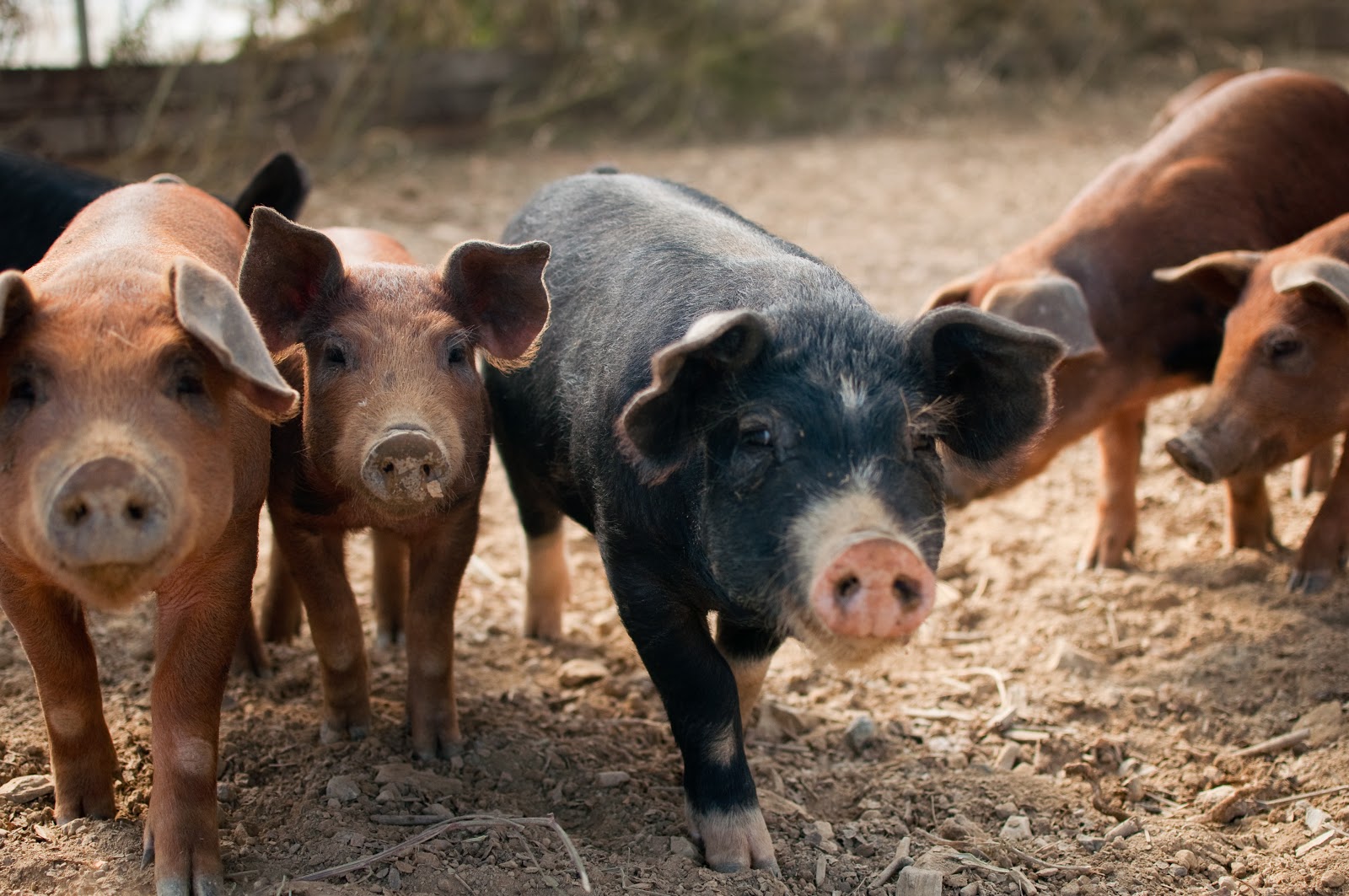
Beyond ending consolidation, the government could intervene to support smaller and organic farms. As Vilsack noted during an online presentation to the National Anti-Hunger Policy Conference, subsidies and bailouts affirm the strength of larger operations — the intensive operations with the greatest threats of emerging diseases — over the small farmer. “When you compensate on production, the person who is producing more benefits more. It means the gap widens,” he stated. The first COVID-19 aid packages for farmers were based on this formula, meaning the top 10 percent of producers (based on output) received 60 percent of the benefits while the bottom 10 percent of producers — likely farmers running small or free-range operations, many of which Vilsack noted may be managed by people of color — received a quarter of a percent. Vilsack could reduce subsidies to large producers in favor of small operations, moving profits away from factory farming and toward small-scale, family-owned businesses that have been marginalized for decades.
One measure Martin suggested is levying a meat tax so that the product price reflects the negative consequences, which consumers pay for later and through other sources. “It should be taxed because there’s an externality that is not being accounted for. And that externality comes in two forms: adverse health outcomes that we pay for as a country, and climate change and environment issues that we all pay for,” Martin described. “These externalities should be taken into account.”
A meat tax could reduce profits from the consumer end, and eventually reduce the industry’s profitability to a point of reducing factory farming. But rather than raising the price of meat, the government can stop artificially diminishing it, and find ways to make other proteins affordable for consumers. As of 2019, the USDA began regulating cell-cultured animal meat products, which don’t require living livestock. Because they don’t require crowding living animals into small indoor facilities, these products don’t pose zoonotic disease risks — though they are at a disadvantage in the market due to their higher price. Rather than supplementing animal proteins that require livestock raising, and which already operate at a deficit, these funds could be allocated toward plant-based protein sources or artificially grown meats.
Martin’s organization, PhARM, addresses meat consumption through a public health lens. Studies show that red meats in particular increase the likelihood of developing comorbidities such as heart disease and Type 2 diabetes. But the more Martin studied, he told WhoWhatWhy, the more incredulous he was about the American diet. “It’s not good for our world, it’s a major contributor to climate change, it’s a major contributor to the likelihood of a pandemic, it’s terrible for our environment in terms of pollution of our environment and waterways, it’s not good to the animals,” he said. “Why are we doing this?”
Kitchen Table Topics
When food poses obvious health dangers for consumers, the world responds.
Beginning in 1986, the UK had an outbreak of “mad cow disease,” which has infected and killed 232 worldwide — only four resided in the US. Both humans and cattle are thought to have become infected by eating parts of cows, since, at the time, ground up blood and bone meal was included in animal feed. The industry stopped feeding bone and blood meal to animals, even though doing so decimated sellers of those products.
The COVID-19 pandemic has killed half a million people in the US alone. Martin warns that a pandemic born from an intensive farm may be even more deadly than one that comes from wildlife: crowding, animals’ genetic similarity, weakened immune systems, and the quantity of animals in the space all create the perfect environment for a deadly disease to spread quickly until it learns to jump to humans.
Phasing out intensive agriculture, or at least reducing its ills, is unlikely to destroy the entire food system, even if it curbs meat consumption. But not doing so could breed another pandemic, potentially deadlier than the current one. The question is if leaders are willing to take on an adversary as strong as big ag now that the threat is one step removed from the kitchen table.
Part 2 in a series. Read Part 1.
Related front page panorama photo credit: Adapted by WhoWhatWhy from Jake Mueller, iStock / Oligo, Holstein cows over blue sky
